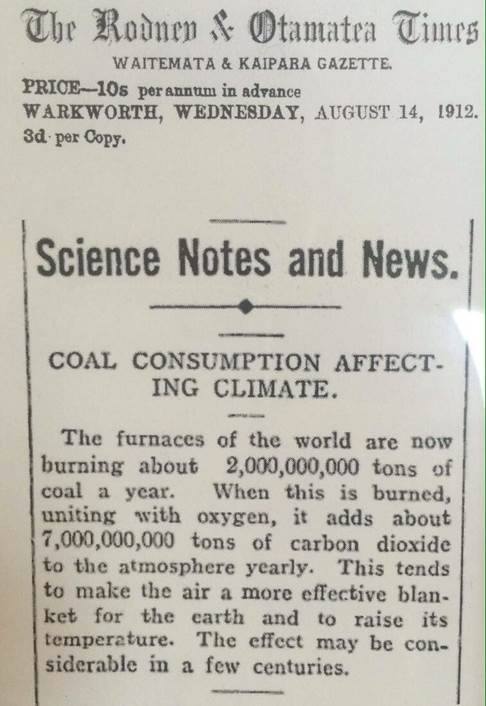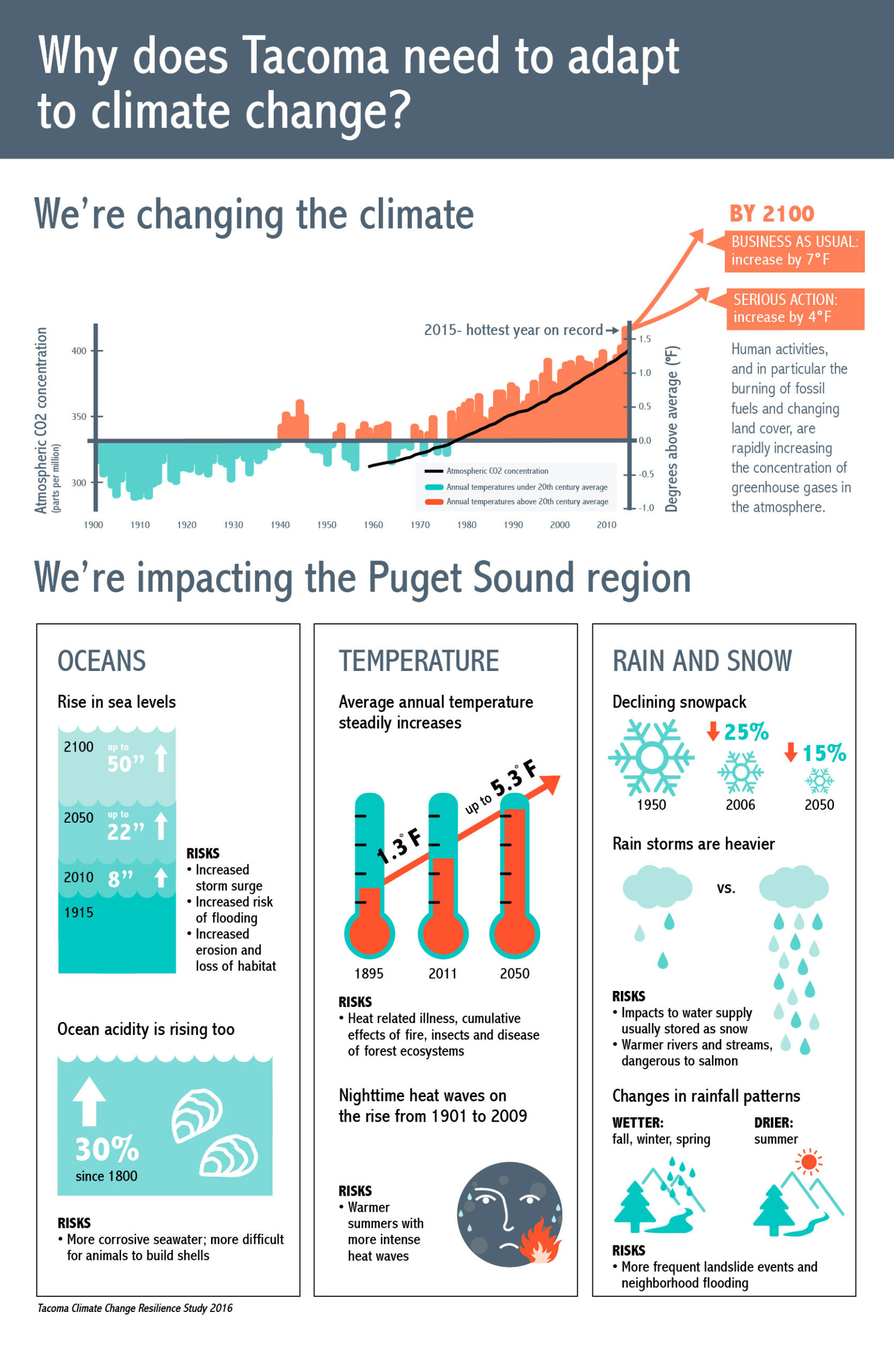Climate change? What climate change?
By Morf Morford
Tacoma Daily Index
The first Earth Day was in 1970. The assumption back then was that with cleaner cars, more litter bags and a few more air quality regulations, we would all be living in a smog-free, clean environment in perpetuity.
The rallying cry then was to “Save the earth”.
Fast-forward almost fifty years and those assumptions seem as pallid and embarrassing as the music and fashions that came to define the rest of the 1970s.
In 2019 our weather vocabulary has changed – Snowmageddon, Snowpocalypse, weather bomb, bomb cyclone, frost quakes, thundershow and bombogenesis, among many others, have emerged to attempt to define previously undefined – and unimaginable – weather conditions.
These extremities of intensity of heat, drought, cold and flood have ruined crops across more nations than most of us could name and have fueled famines, civil wars and mass migrations that only occasionally emerge on headlines and newsfeeds.
But they do, more and more. And these weather catastrophes become even greater – and come closer to home – each day.
But even as they do, the denials and distractions continue, if not increase.


In 2019 the rallying cry is not to “Save the earth”. For better or worse, we all know that the earth – its systems and most of its species will survive. It is the survival of civilization, if not humanity itself, for those who are paying attention, that is at stake.
One hundred, or even five hundred year floods, storms or fire seasons now come almost every year.
The nightly news dedicates about half of every news program to yet another weather-related catastrophe – and it is not across an ocean or thousands of miles away. It’s people and places we know.
You rarely hear the term “climate change.” But the news anchors are running out of adjectives; the weather is “extreme” “crazy”, “weird” or “wild”.
Even though we see or experience “wild weather” almost every day and see that it is getting ever more extreme with each season, many of us just cannot make the leap to acknowledge that these extreme gyrations of weather are systemic and semi-permanent. They are the new normal.
That’s a brief definition of the distinction between weather and climate; weather is what we see and experience each day – climate is the accumulated weather patterning over decades if not centuries.
If there is any single book you should read to make sense of the climate upheavals impacting everything from food prices to the increase of civil wars and terrorism, the re-emergence of medieval (or far older) diseases, the rise of the sea level, or the near-extinction of multiple species from bees to giraffes, it should be The Uninhabitable Earth: Life after warming by David Wallace-Wells.
I have two enduring philosophical problems with books like this. The first is that a barrage of mind-numbing (though certainly real, measurable and relevant) facts and statistics tend to lead to a near-fatal case of “paralysis of analysis” and, second, the facts and stories, as dire and horrifying as they are, are not dire and horrifying enough.
The pages of the book written not that long ago, are already approaching obsolescence if not a charming, child-like optimism regarding both the immensity (and ever expanding and intrusive feedback loops) of climate change and the even more disheartening capability – if not capacity – of humans at any level to respond to it.
There is an old saying that one should not look like they need a haircut, or like they just had one.
This is an apt metaphor for how most of us (and our governments) look at climate change; we are unwilling to admit that we are in the midst of a climate catastrophe and, even though we may be convinced that the situation is indeed urgent, to admit to the necessity of action is to admit that our own complicity and neglect have contributed to the sheer unmanageability of the problem.
So, we all, or most of us, huddle, deny and obfuscate – and create an even larger – and more intractable – set of problems for someone else.
And that “someone else” could easily be ourselves as the next fire, flood, drought, storm, blizzard, king tide or hurricane hits us.
That something as obvious – and measurable – and impactful – as weather should become a political issue will be a prevailing topic of conversation in the future –https://www.politico.com/magazine/story/2019/01/27/climate-change-politics-224295.
If we have a future.
And that is one of the conclusions of “The Uninhabitable Earth” – this is no geothermal phase, no natural cycle. Once the polar ice caps melt (and the sea level rises, the saline level of the ocean is changed and the oceanic currents {thermohaline to use the technical term – https://oceanservice.noaa.gov/education/tutorial_currents/05conveyor1.html} slow or even stop), our (largely) predictable seasons essentially stop, agriculture ends, our usable/arable land mass shrinks dramatically – and permanently.
Entire states (like Florida) – and several low-lying nations – (like Fiji, Tuvalu, Kiribati, Vanuatu, and the Marshall Islands) will be completely submerged.
To put it mildly, climate change and rising sea levels are a threat to our national security. The US Navy has been monitoring these changes and threats for years. (1*)
As their website puts it – “The Center for Climate and Security (CCS), a non-partisan institute of the Council on Strategic Risks, has a team and distinguished Advisory Board of security and military experts. CCS envisions a climate-resilient world which recognizes that climate change threats to security are already significant and unprecedented, and acts to address those threats in a manner that is commensurate to their scale, consequence and probability.”
The Port of Tacoma (and all seaports around the world) takes this very seriously. Ports, to state the obvious, are at or near sea level. As are major cities like London, New York and, the biggest port in the world – Shanghai.
Greta Thunberg, the teen Swedish climate activist describes the world as “on fire” – but even that is not enough. Fires consume and are extinguished. Reclamation – by nature or human beings – is possible – if not “natural”.
But once the polar ice caps are gone, they are gone.
There is nothing inherently ordained about our relatively stable and temperate climate. Our accustomed climate will not be the norm for the climate of a century – or even a decade from now.
And I haven’t even mentioned the re-emergence (emergence) of new or long-submerged diseases that threatened species (and yes, even human) extinction.
That would be diseases like cholera, typhus, Zika, Ebola and many more yet to be recognized or experienced.
Some are species specific (and we can only hope they stay that way) others make the leap and cross specie boundaries.
Either way, the disease apocalypse has certainly been unleashed –https://www.theatlantic.com/science/archive/2019/03/bd-frogs-apocalypse-disease/585862/.
As good as humans are at problem avoidance, we are also good (at least as a species) at adapting. The human, financial and social cost of our climate neglect will be beyond measurement (far more than the combined GDP of every nation on earth) but humanity, ever clumsy but somehow resilient, just might, in some form, live to tell the tale. (2*)
One of the sub-themes of this book – and many articles and books – is how (relatively) easy it would have been to set in motion corrective actions, even in the early 2000s.
But like compounding interest, the math is unrelenting and unforgiving. The stakes grow higher with every weather cycle – until, some say, even drastic action is not enough – https://www.businessinsider.com/so-much-co2-planting-trees-cant-save-us-2017-5?
And, like home maintenance, the longer it is deferred, the more it will cost.
Over a hundred years ago, the direction we were headed was obvious, but somehow inertia set in – and along the way, we forgot the basic dictum from Boy Scouts – leave every place better than you found it.
The question is, in one generation, can we re-stabilize our climate in time or will the earth be thrown into semi-constant climate turmoil, when we, a generation with the means, at a pivotal time could have made a difference? Either way it will be our legacy.
(1*) https://climateandsecurity.org/
(2*) Many who study the effects of climate change mitigation consider it not an expense, but an investment. Maybe even the best – and most essential humans have ever made – https://climatepolicyinfohub.eu/costs-mitigation-overview.












